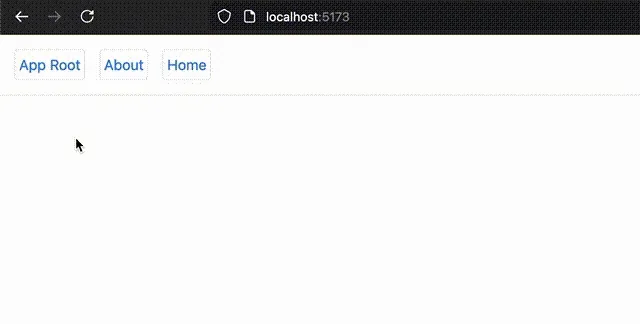Routing
Routing is the process of determining which component to display based on the current URL. It is a fundamental part of building single-page applications (SPAs) that have multiple views.
The router has many features like nested routes, route parameters, ranked route matching, route guards, navigation events, data loading and more. those features are explained in the “routeing guide” section.
Creating A Router
sig comes with a build in @sigjs/router module, providing Router functionalities that allows you to define your application’s routes and views.
By calling the createRouter function with routes config, you create a router component.
function createRouter(config: RouterConfig): VirtualElementfor now, lets focus on the RouterConfig property routes which is an array of RouteConfig objects defining the routes of the application.
Configuring your routes
A RouteConfig object has three main properties:
path: The URL path to match.component: The component to render when the path matches.children: An array of nested child routes.
Let’s start with a simple example:
Here’s two pages, Home and About:
function Home() { return <div>Home Page !</div>;}
function About() { return <div>About Page !</div>;}And a common Layout component that will be used to wrap the pages:
import { Link } from "@sigjs/router";function Layout() { return ( <div className="flex flex-col items-center"> <nav className="flex gap-4"> <Link className="border text-blue-500" to="/">App Root</Link> <Link className="border text-blue-500" to="/about">About</Link> <Link className="border text-blue-500" to="/home">Home</Link> </nav> <div className="flex flex-col items-center"> <router-outlet /> </div> </div> );}Render the router
Now, let’s create the router and define the routes:
import { createRouter } from '@sigjs/router';function AppRouter() { return createRouter({ routes: [{ path: '/', component: Layout, children: [ { path: '/home', component: About }, { path: '/about', component: About } ], }] });}On the root route / we define the Layout as the route page, in this route we define the child routes /home and /about with their respective components Home and About.
In the Layout components there’s a router-outlet tag allowing the child routes to render in the parent Layout component.
Finally, render the AppRouter component in the App component:
function App() { return <AppRouter />;}
More on Sig Router